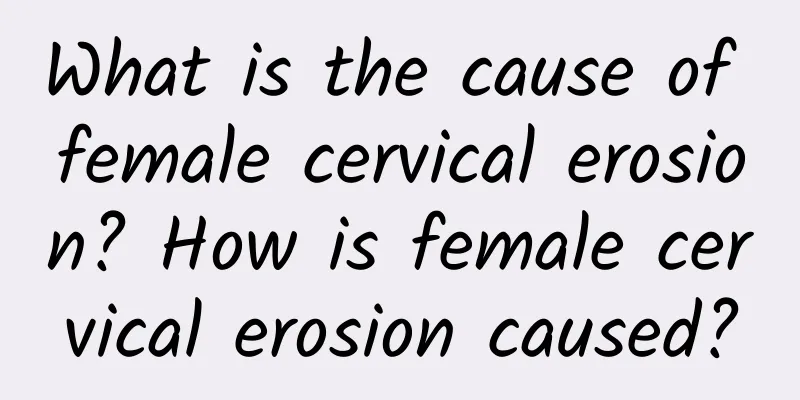What is the cause of cervical erosion?

|
Cervical erosion is a common gynecological phenomenon, which is mainly related to changes in hormone levels, inflammatory stimulation and the natural renewal of cervical epithelial cells. It is not a disease, but a physiological change, and usually does not require excessive treatment. 1. Changes in hormone levels Fluctuations in estrogen levels in women can affect the growth and shedding of cervical epithelial cells. During puberty, pregnancy, or when taking birth control pills, elevated estrogen levels may cause the cervical columnar epithelium to move outward, creating an "erosive" appearance. This condition usually does not require special treatment and will naturally recover as hormone levels stabilize. 2. Inflammatory stimulation When the cervix is infected by bacteria, viruses or fungi, it may cause inflammation, resulting in damage to the surface cells of the cervix and erosion-like changes. Common pathogens include human papillomavirus (HPV), mycoplasma, chlamydia, etc. Treatment should be based on the specific type of infection and antibiotics or antiviral drugs, such as azithromycin, doxycycline or interferon. 3. Natural renewal of cervical epithelial cells The cervical epithelial cells will be renewed periodically, and the new columnar epithelial cells may cover the original squamous epithelium, forming an erosion-like appearance. This is a normal physiological phenomenon and usually does not require intervention. If accompanied by discomfort symptoms, such as increased leucorrhea or contact bleeding, it can be treated with local medications, such as Baofukang suppositories or compound zedoary oil suppositories. 4. Trauma or surgery Mechanical damage to the cervix, such as childbirth, abortion, or cervical surgery, may lead to erosion-like changes in the local tissue repair process. In this case, attention should be paid to postoperative care to avoid infection, and if necessary, drugs that promote repair, such as recombinant human epidermal growth factor gel, should be used. 5. Pathological factors In rare cases, cervical erosion may be associated with cervical precancerous lesions or cervical cancer. If the erosion is large or accompanied by abnormal bleeding, cervical cytology (TCT) and human papillomavirus (HPV) testing are required to rule out malignant lesions. Treatments include cervical conization, laser therapy, or cryotherapy. Cervical erosion is mostly a physiological change and does not require excessive treatment. If accompanied by discomfort or infection, appropriate measures should be taken according to the specific cause. Regular gynecological examinations are the key to preventing and early detection of cervical lesions. |
<<: Abnormal black vaginal discharge after menstruation
>>: All women have abnormal vaginal discharge
Recommend
What are the main symptoms of congenital absence of vagina?
Congenital absence of vagina, as the name suggest...
Can menopause be completely cured?
Due to family economic and psychological reasons,...
How to diagnose female cervical erosion? Can cervical erosion be diagnosed? Recommended Chinese medicine treatment methods
How to diagnose cervical erosion? Nowadays, cervi...
How long does it take to cure functional uterine bleeding?
The duration of treatment for functional uterine ...
What are the effects of drinking Yuesukang after artificial abortion?
Taking Yuesukang after artificial abortion usuall...
How to avoid miscarriage? Do these 5 things
There are many ways for women to avoid miscarriag...
How much does intrauterine adhesion surgery cost?
How much is the cost of treating intrauterine adh...
Three common symptoms of ovarian cysts
The symptoms of ovarian cysts mainly refer to one...
What are the dangers of vulvar leukoplakia?
Female friends may be familiar with vulvar leukop...
How to recognize the symptoms of Bartholinitis
Regarding the symptoms of Bartholin's cystiti...
President: The permissible amount of ractopamine is comparable to the international 10ppb
President Ma Ying-jeou met with former U.S. Depar...
Facing the truth about obesity (Part 2): Can you lose weight by exercising more?
Americans have been getting steadily fatter over ...
Does Chinese medicine treatment work for thick endometrium?
What are the traditional Chinese medicines for tr...
Does medical abortion hurt? It depends on the individual
There will be varying degrees of pain during the ...
Is 20mm of pelvic effusion serious?
Is 20mm of pelvic fluid serious? 1. This is a que...









